5 Reasons to Switch to In-Floor Heating
Posted on by WestAIR Heating & Cooling

Radiant in-floor heating systems are becoming a more popular way to heat your home. It’s typically installed during the construction period as a boiler, pump, and gas lines are needed to complete the system. This form of heating uses hot water pumped through plastic tubing. It’s laid out in a serpentine pattern underneath the flooring to heat the house.
In-floor heating is a great way to add a touch of luxury to your space. The chilly winter evenings no longer require slippers and the air around you feels cozy. This addition to your home is a great way to upgrade your most trafficked spaces, allowing all family and friends to enjoy its benefits. Continue reading our blog to explore the pros of radiant in-floor heating.
Uniform Heating
In-floor heating will allow uniform heating throughout your space. When your home is heated with only forced-air systems, locations of the vents determine which parts of the room are warmer and cooler. Underfloor radiant heating warms the entire floor equally, meaning you will be comfortable at lower temperature levels because you won’t have cold spots or drafts.
Non-Allergenic
Radiant in-floor heating systems directly warm the flooring of the home. This heating is great option for families that are prone to allergies. Any time a forced-air systems is turned on, instantly dust particles are disturbed and scatter into the air being breathed in. In-floor heating will warm the space more evenly without agitating allergies.
Energy Efficient
In-floor heating is 25 percent more efficient than forced-air systems, which push warm air through ductwork that’s susceptible to leaks and will ultimately expend more energy to heat the home. Additionally, the space between vents allows warm air to cool before making it to the other side of the room. With inconsistent temperatures, the thermostat sensor will read incorrectly and keep the heat running constantly. By not using air ducts for distribution, radiant in-floor systems eliminate these heat loss issues and retain more of the warm air.
Minimal Maintenance
Unlike forced air heating, there are no maintenance costs with radiant floor heating. Depending on the brand you choose, some companies even guarantee their product for decades. In-floor heating allows you to skip the bills that come with annual furnace checks and air filter replacements and spend that money elsewhere.
Safety
Radiant in-floor heating is one of the safest heating options for your home, especially a home with children. In-floor heating is completely enclosed while other heating options are not. Old fashioned radiators may be a fun piece of history that comes with an older home, but they also come with a glaring warning sign. Radiators can pose as a safety hazard and cause burns as their pipes heat up. Not only can an adult be burned who is aware of the heat coming from the radiator, but it can be a serious hazard to children.
For all your heating and cooling needs, trust the HVAC experts at WestAIR. Contact us today to learn more about in-floor heating.
This entry was posted in Energy Savings,Heating and tagged Heating and cooling, low maintenance heating solutions, Radiant infloor heating, WestAIR
Automatic Zoning Equals Automatic Savings
Posted on by WestAIR Heating & Cooling
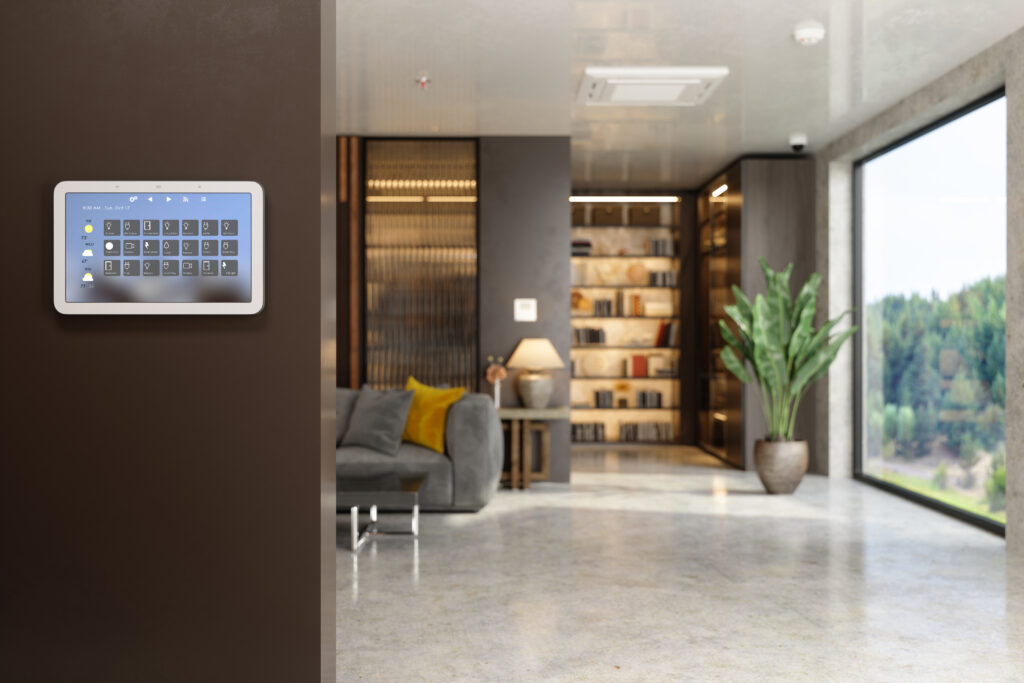
As technology progresses towards robots and flying cars, it has made a few impactful technological home breakthroughs along its journey. HVAC systems have become more advanced, smart, and convenient, ultimately making your life easier. Continue reading our blog to learn about automatic zoning technology.
The Smart Home Rises
Automatic zoning allows a homeowner to control the temperature in each living space or zone in their home. No longer will thermostats read the temperature in the middle of the home, leaving the second story warm and the basement feeling cold, like they have in the past. With automatic zoning, the ductwork controls airflow for each zone, not the whole house, allowing temperatures to be customized. The control panel in the HVAC system receives the temperature from your smartphone or other device and sends the information to the thermostat, changing the temperature instantly.
Benefits of Automatic Zoning
- Zoning makes it possible to regulate temperatures in all rooms of your house, allowing you to save money by keeping rooms you use less often at a warmer temperature.
- Manufacturers have created a smart thermostat that syncs with your Wi-Fi. This technology allows you to adjust your home’s temperature from anywhere.
- HVAC systems are likely to experience less wear if you install a zoning system. Your HVAC unit will rarely run at full capacity when some rooms are requiring less heating or cooling from lack of use.
- Add-on features can be installed when you choose to have automatic zoning such as an air cleaner and a humidifier.
The benefits of automatic zoning are countless. WestAIR can create a comfortable atmosphere for any room in your home. Save on energy bills by installing energy efficient zoning. This smart technology is something we are happy to discuss further with you. Contact us today.
This entry was posted in AC,Air Conditioning,Energy Savings and tagged Automatic zoning, HVAC System, Smart home, Smart Technology, WestAIR
IMPROVING YOUR INDOOR AIR QUALITY: DEHUMIDIFIERS
Posted on by WestAIR Heating & Cooling
During the summer months, do you find the air inside your home feeling damp? Living in Minnesota, we know exactly what an overly humid summer day feels like, even from inside. Not only is it sticky and uncomfortable, but we also see a rise in our electricity bill from our HVAC system working overtime. Humid air can also damage floors, furniture, and walls making homeowners spend even more money down the line. A dehumidifier can fix all of this. Read our blog as we discuss how dehumidifiers can improve your indoor air quality.
Why do you need a dehumidifier?
Dehumidifiers are the key to better air quality in your home. Not only do they help maintain your comfort, but also help prevent the growth of mold in your home, which means improved health and safety for you and your loved ones. When there is less humidity in the air, it also allows you to raise the temperature a few degrees to save on cooling expenses. Installing a dehumidifier is sure to save you money and benefit your health in the years to come. The gains of a dehumidifier are infinite!
How do dehumidifiers work?
Dehumidifiers work in one of two ways, either by refrigeration or absorption. Let’s take a look at how both methods work.
- Refrigeration: These dehumidifiers pull moisture over a cooling coil inside either a portable or whole house dehumidifier. The moist air condenses down, and any vapor is turned into droplets that collect in a pan or directly down a drain. Now free of moisture, the air passes over the hot compressor and warms back up to its original temperature before being blown back into the room.
- Absorption: These dehumidifiers pull moist air in through a duct which then moves past a large rotating wheel. The wheel is made of water-absorbing material. Once the air meets the wheel, any vapor is absorbed into the material leaving only dry air to be blown back out into the room.
Dehumidifier types and models
Dehumidifiers are available in a variety of different models. If you are looking to dehumidify a small space, a portable dehumidifier is the way to go. Portable models are available in different sizes, yet they all function the same by collecting moisture in a container. Whole house dehumidifiers are similar, but they empty directly into a drain.
If you are looking to dehumidify your whole home, you can purchase a system that attaches to your HVAC system. Living in Minnesota, this is a staple for living comfortably. Excessive humidity can seep into your home decreasing the indoor air quality and becoming a breeding ground for mold growth. HVAC dehumidifier attachments allow your cooling system to work efficiently and keep your home’s air quality and moisture level at your desired level.
The professionals at WestAIR are ready to assist with all your home comfort needs. Contact WestAIR Heating and Cooling today to learn more about reducing humidity and improving your indoor air quality.
This entry was posted in Cooling,Humidity,Indoor Air Quality and tagged Dehumidifier, Heating and cooling, HVAC, Indoor air, Indoor air quality, WestAIR
Indoor Air Quality Tips to Help You Breathe Easy This Summer
Posted on by WestAIR Heating & Cooling
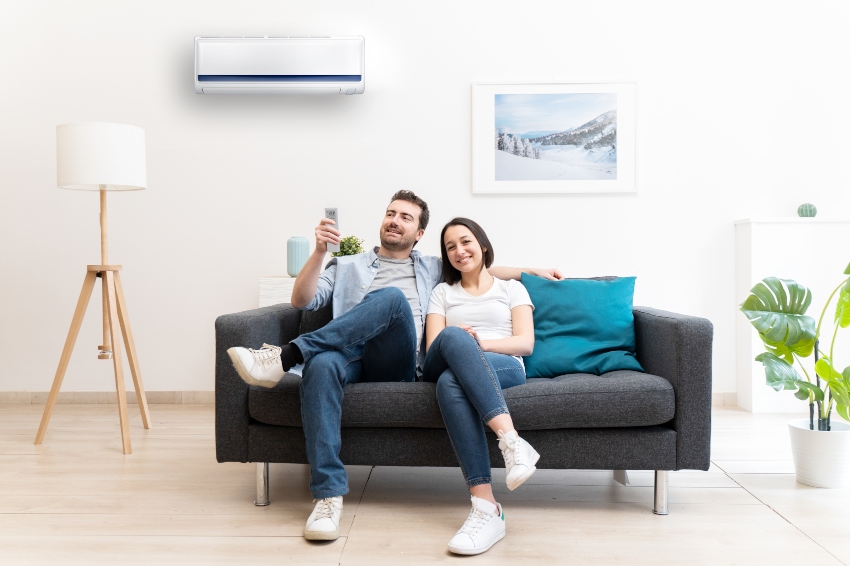
In the hottest summer months, there’s nothing quite like drinking a glass of iced tea and sitting in an air-conditioned room. But that seeming escape can actually be detrimental for your health if you have poor indoor air quality. From headaches, fatigue, and trouble concentrating to irritation of the eyes, nose, and throat, indoor air contaminants have been linked to diseases like asthma. How can you improve the air quality in your home? There are a number of available solutions. We’ve pulled a few of them together here to help you decide which one is right for you. Read on as we discuss indoor air quality tips to help you breathe easy this summer.
Air Exchangers for Fresh, Filtered Outdoor Air
Circulation is critical for good indoor air quality. Stale indoor air can become thick with contaminants and excess humidity, which can lead to mold growth. An air exchanger like the Venmar® Ventilation System, provides your home with a continuous flow of filtered outdoor air, reducing humidity and expelling pollutants from the home.
Take Air Quality a Step Further with an Air Cleaner
With an air cleaner, you can upgrade your existing heating and cooling system to help you improve the air you breathe. These systems capture airborne dust, pollen, and other particles far better than your standard furnace filter, helping eliminate pollutants in the air.
The Power of Ultraviolet Light
UV light technology can go beyond removing airborne particles to eliminating volatile organic compounds (VOCs) and reducing microorganisms. The best part? UV air purification systems like the BreatheCLEAN UV air purifier can be easily installed into existing ductwork with no major changes to your HVAC system.
If you’re looking to breathe easier, the experienced indoor air quality professionals at WestAIR are here to help. See what our customers have to say, and then contact us to schedule a service today!
This entry was posted in AC,Air Conditioning,Health Tips,Indoor Air Quality,Tips and tagged Air cleaner, Air exchanger, Importance of Indoor Air Quality, Indoor air quality, Indoor air quality solutions, Indoor Air Quality Tips, Summer, Summer Cooling, Summer HVAC, Summer HVAC Tips, Ultraviolet Light Air Purification, UV Light Air Purification, UV lights, WestAIR Heating & Cooling
Money-Saving Tips to Keep Your Home Cool This Summer
Posted on by WestAIR Heating & Cooling

The warm weather is almost here, and while the sunshine is more fun for the family, it can also mean an increase in your energy bill. Try these money-saving tips to keep your home cool this summer.
Replace Your Air Filters
A dirty air filter restricts air flow for your home’s HVAC system, which makes it less efficient, ultimately costing more to cool your home. Most air filters last up to three months, but if you have pets or allergies, you’ll want to replace them more often. We advise changing your filters every month, even during cooling season. A dirty or clogged filter is the number one reason for AC failure. Check the recommendation on your air filter’s packaging or install a smart thermostat to tell you when it’s time to swap out your filter.
Service your AC
The start of summer is a great time to make sure your air conditioner is ready to take on the heat. Make sure your condensing unit—the outdoor section of your central AC system—is clear of grass, leaves, pet hair, and other debris. If your system is older, have a professional out to service your air conditioner.
Adjust Your Thermostat
If you’re not home during the day, consider setting your thermostat seven to ten degrees higher. This can save as much as ten percent on your energy bill, according to the U.S. Department of Energy. Can’t remember to make those adjustments? A seven-day programmable thermostat allows separate programming for each day to help you save on your cooling costs.
Consider Zoning
A zoning system takes temperature regulation a step further, separating your home into the living area and the sleeping area. This means you don’t waste energy (and money) cooling parts of the home you aren’t using during the hottest parts of the day.
The money-saving tips can help improve your home’s cooling efficiency this summer. The experienced HVAC professionals at West Air are here to help. Contact us today to schedule an appointment with one of our HVAC experts.
This entry was posted in AC,Air Conditioning,Energy Savings,Tips and tagged air conditioning, money-saving tips, WestAIR, WestAIR Heating & Cooling
4 Spring HVAC Reminders to Prepare for Cooling Season
Posted on by WestAIR Heating & Cooling
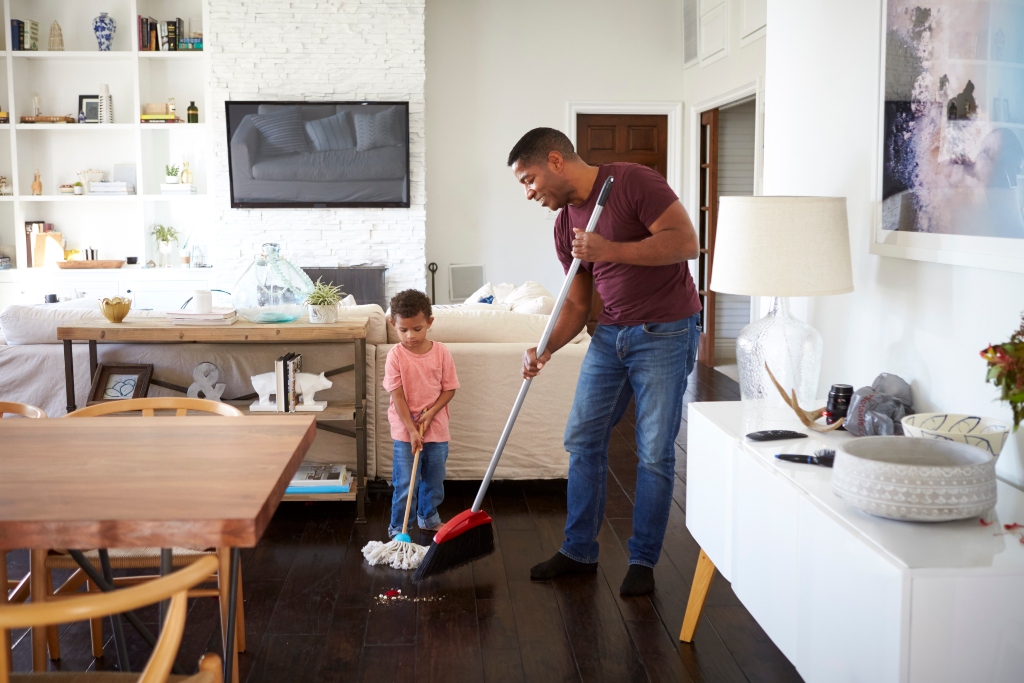
Spring officially began on March 20 and despite some chilly days and “surprise” snowfall, cooling season is on its way. You may be ready for the shift, but is your air conditioner? Use these spring HVAC reminders and tips to help prepare your system for the hot summer days ahead.
Cleaning Tips Around the Home
Whether you’ve already finished your spring cleaning or have yet to bust out the rubber gloves, don’t forget to incorporate your HVAC system into your routine:
- Dust and disinfect floors and hard surfaces around the home. Keeping them clean helps prevent dirt, allergens, and other airborne particles from getting inside your ductwork.
- Clear debris buildup from exhaust fans. After making sure the power is off, wash with soapy water and use a toothbrush to clean dirt and debris off the fan blades.
- Clean windows, blinds, and curtains. That way you can let in fresh air and sunlight without a producing a cloud of built-up dust whenever you open them.
- Dust the blades of your ceiling fans. Similarly, you don’t want dust to fly all over whenever you turn the fan on. And remember to run fans counterclockwise in the summer to blow air straight down and create a windchill effect.
- Clean the grills of floor registers and air vents. Use a vacuum to remove collected dust and debris. For a deeper clean, remove the vent, scrub the individual grill spaces with a rag and butter knife, and then rinse with warm soapy water.
Have your Ductwork Professionally Cleaned
While regular dusting, mopping, vacuuming, and cleaning of the vents and registers helps minimize the amount of debris that gets into your ductwork, there’s no way to prevent it entirely. Duct cleaning helps prevent dust, pollen, and other harmful particles from accumulating and impacting the health of your HVAC system and indoor air quality.
Seal the Home
Don’t let the cool air your HVAC system produces go to waste. Check windows, doors, and exterior walls for cracks and seams that could let indoor air escape and hot, humid outdoor air sneak in. Seal them with caulk to help maintain efficient cooling.
…but Provide Proper Ventilation
Providing fresh air and adequate ventilation are vital to maintaining indoor air quality. Open windows on nice days for natural ventilation and air flow. Consider installing an air exchanger that simultaneously removes stale, recycled indoor air while supplying fresh, filtered air from outside.
Test the System & Schedule Preventative Maintenance
Don’t wait for the first hot, humid day of the year to test your air conditioner. Turn the system on now to check for any issues, and schedule annual preventative maintenance with the local HVAC experts at WestAIR to ensure optimal performance, efficiency, and safety.
With Minnesota’s unpredictable weather, spring can feel like little more than a brief break between the last snowfall and the first hot, humid day of summer. Don’t let the window sneak by without giving your home’s air conditioner some much needed TLC! Use these spring HVAC reminders to help ensure your system is ready to keep your home cool and cozy all season long.
For all your heating and cooling needs, trust the knowledgeable, experienced HVAC professionals at WestAIR. Contact us to learn more about our services.
This entry was posted in AC,Air Conditioning,Cooling,Duct Cleaning,Energy Savings,Health Tips,HVAC Maintenance,Indoor Air Quality,Spring,Tips and tagged Air conditioner, Air conditioner maintenance, Air conditioner tune-up, air conditioning, Annual check-up, Annual service maintenance check, Cooling Season, Cooling Season Prep, Cooling system, Cooling Tips, Duct cleaning, Duct cleaning service, Professional duct cleaning, Spring, Spring Cleaning, Spring Heating and Cooling, Spring HVAC, Spring HVAC Reminders, WestAIR Heating & Cooling
Keeping Air Ducts Clean
Posted on by WestAIR Heating & Cooling

In a previous blog, we discussed air duct cleaning and maintenance. Because these duties help provide better indoor air quality, we wanted to mention them again and reiterate their importance to your home and health. Learn more about some reasons for keeping air ducts clean and ways to do so.
Indoor Air
Wherever you go, it only makes sense that you want to breathe the cleanest, healthiest air possible.
The Environmental Protection Agency estimates that the average American spends 90 percent of their life indoors. As such, it’s important for your home’s air to be free of as many contaminants as possible. This is especially important since the accumulation of indoor air pollutants is exponentially higher than regular outdoor concentrations.
Some effects of poor indoor air include respiratory issues and disease, headaches, dizziness, and fatigue. Oftentimes indoor air pollutants can increase the intensity of issues like asthma and even cause eye, nose, or throat dryness and irritation. Protect yourself and your family by keeping air ducts and your home’s air clean.
Duct, Duct, Dirty Duct?
Your HVAC system often pulls in outside air to condition and distribute through the home, so dirt, dust, and other allergens find their way in. Since the ductwork throughout your home is hidden, you probably don’t give it much thought. And because it’s hidden, it’s more difficult to access and clean.
So how do you know if your ductwork is hiding something unhealthy? Look for telltale signs, such as:
- Dust. If you continually notice dust even after you’ve cleaned, check your vents. Remove the register cover to see if the ductwork is lined with dirt or dust, too.
- Cost increase. Are your utility bills noticeably higher compared to the same time last year? Your HVAC system may be working harder (and less efficiently) because of restricted airflow. This could be from dirty ducts or dirty air filters. A trusted technician can perform an inspection and determine the cause.
Keeping Air Ducts Cleaner
Routine home maintenance can help keep your air ducts cleaner and your indoor air fresher.
Check and change HVAC filters. This could be every 30 days or every few months, depending on how often your system runs, if you have pets, or if you have younger children or allergy sufferers in the home. Check the filter on a regular basis and change it as needed.
Have your HVAC system inspected at least once a year to ensure it is operating at peak performance. This will also allow you to catch and fix any smaller issues before they become potentially bigger problems. Routine maintenance can extend the life of your heating and cooling systems, saving you money in the long run.
Complete household chores each week. This includes dusting hard surfaces and flooring, vacuuming carpeted areas (and vent covers), and running bedding through the wash. Also, vacuum and wash pet bedding as needed, and consider a high-quality HEPA filter vacuum to further reduce indoor air contaminants.
A few upgrades will also go a long way toward improving air quality at home.
- Rid your home of dry air with a whole house humidifier. Dry air can make skin to feel tight and itchy or cause nose or throat discomfort. The wood inside your home can also be negatively affected by dryness. Adding moisture to the air can increase your overall home comfort.
- Remove odors and pollutants with a UV light air purification system. A BreatheCLEAN UV air purifier works with your current HVAC system and removes contaminants to provide continuous protection.
Small changes to daily, weekly, and yearly routines can help with keeping air ducts clean while increasing overall indoor air quality. If you think your ductwork should be checked, rely on the experienced professionals at WestAIR Heating & Cooling.
Contact us today to learn more about our duct cleaning or other services.
This entry was posted in Duct Cleaning,Health Tips,Humidifier,Humidity,HVAC Maintenance,Indoor Air Quality,Spring,Tips and tagged Air ducts, Clean Air Ducts, Duct cleaning, Duct Cleaning and Indoor Air Quality, Duct cleaning service, HVAC Maintenance, HVAC System Efficiency, Keeping Air Ducts Clean, Professional duct cleaning, Residential HVAC, Signs of Dirty Ductwork, westair heating and cooling
7 Tips for Extending the Lifespan of HVAC Equipment
Posted on by WestAIR Heating & Cooling

When it comes to weather, Minnesota is a place of extremes. Our harsh, bitterly cold winters and hot, humid summer days make a functioning furnace and air conditioner crucial to a comfy home. Follow these tips for extending the lifespan of HVAC equipment to get the most out of your system.
Schedule Preventative Maintenance Twice Annually
Have your system professionally serviced before each heating and cooling season for a thorough tune-up, cleaning, and maintenance service to ensure peak performance and efficiency. Your technician will also catch minor issues to prevent costly repairs later on, as well as help you decide if it’s better to repair or replace.
But don’t wait for maintenance service or a total breakdown to have your system inspected. If you notice strange sounds or smells, decreased efficiency or performance, or any other warning signs, call your local HVAC professionals to diagnose and repair the issue before it gets worse.
Have Ductwork Professionally Cleaned Every Other Year
Dirt, dust, pollen, and other debris naturally settle inside your ductwork over time. This buildup not only impacts airflow and efficiency, but it also becomes a breeding ground for bacteria. As your HVAC unit pumps air to the home, these contaminants get blown out with it and decrease your indoor air quality.
Schedule professional duct cleaning service once every two years to help maintain air quality and reduce stress placed on the system.
Maintain a Clean Air Filter
Clogged filters decrease airflow, forcing the system to work harder and experience a higher level of wear and tear. They’re also the number one cause of breakdowns. Remember to clean or change your HVAC system’s air filter every month.
Take Care of the Condenser Unit
While A/C condenser units are designed to withstand the elements, they’re not invincible. Inspect your condenser for any damage or debris buildup on occasion, especially after severe storms and instances of hail. Additionally, give the unit two to three feet of space to easily and efficiently draw in air. Keep the unit and surrounding space clean and clear of obstructions as well as grass clippings, leaves, branches, dirt, and other debris.
Check the Drainage Pipe Regularly
HVAC systems feature a PVC pipe on the indoor unit that leads outside to drain excess condensation. Serious damage to this outlet line can result in expensive repairs, so inspect yours regularly for blockages, debris, and any other issues. Be sure to do so more frequently in winter due to the potential of ice or snow deposits.
Invest in a Programmable Thermostat
Being strategic with your thermostat can help lower utility bills and stress on your system. However, constantly adjusting the temperature can have the opposite effect. With a programmable thermostat, you can preset temperature and humidity levels over multiple days without worrying about manual adjustments.
Ease Stress on the System in Other Ways
Give your HVAC system a break whenever possible to maximize its performance and useful life. For more information, check out our helpful guides to optimizing HVAC efficiency in the winter and summer.
Heating and cooling systems contribute up to half of a home’s energy consumption, and we rely on them throughout the year in our state. Use this guide to extending the lifespan of HVAC equipment to keep the air in your home clean and comfy for years to come.
Backed by over 30 years of industry experience, locally owned and operated WestAIR has the knowledge and expertise for all your heating, cooling, and indoor air quality needs. Contact us to learn more about our services.
This entry was posted in AC,Air Conditioning,Cooling,Duct Cleaning,Energy Savings,Fall,Furnace,Health Tips,Heating,Humidity,HVAC Maintenance,Indoor Air Quality,Tips,Winter and tagged A/C, A/C maintenance, A/C Tips, Air conditioner maintenance, Air filters, Condenser Unit Maintenance, Duct cleaning, Energy savings, Energy-Saving HVAC Tips, Extending the Lifespan of HVAC Equipment, Furnace Maintenance, Furnace Tips, Homeowner Education, HVAC Education, HVAC Maintenance, HVAC Maintenance Tips, HVAC tips, Preventative Maintenance, Programmable thermostat
7 Winter Furnace Maintenance Tips
Posted on by WestAIR Heating & Cooling
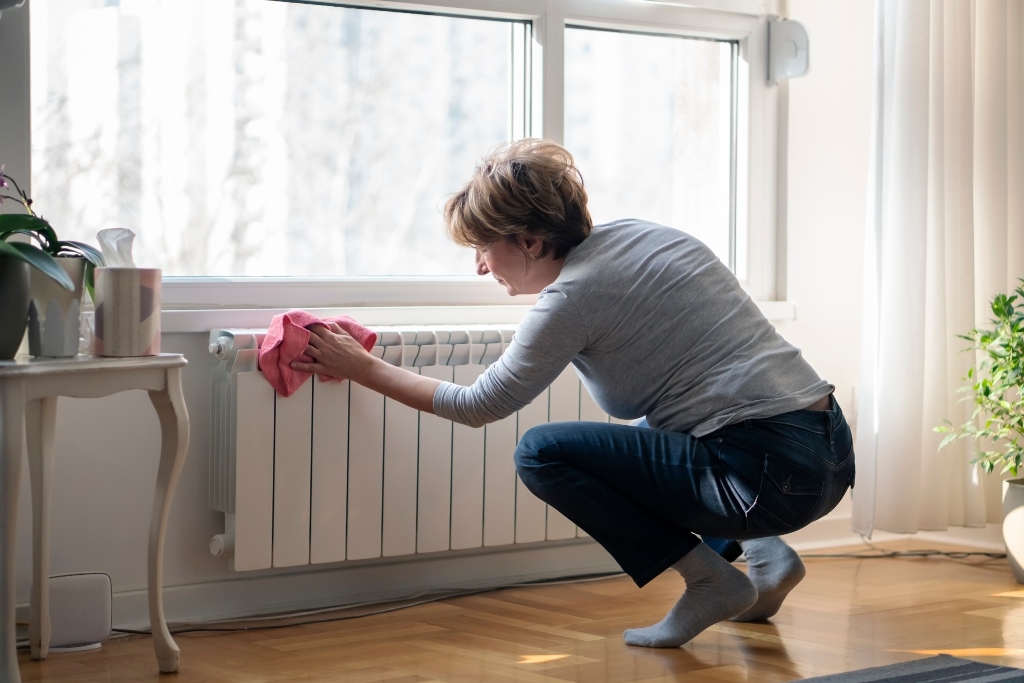
We rely on our heating systems a lot during Minnesota’s long, brutal winters. As we continue through the coldest months of the year, homeowners should take steps to minimize stress on their HVAC system to help prevent inconvenient breakdowns and costly repairs. Use these winter furnace maintenance tips to enjoy optimal performance, efficiency, and comfort all season long.
- Keep the air filter clean. A clogged filter forces the HVAC system to work harder, decreases efficiency, and is also the most common cause of breakdowns. Be sure to change or clean your air filter every month.
- Maintain a clear, clean area around the unit. Giving your furnace room to breathe promotes safe, efficient operation, as well as easy access to the unit for you or your HVAC specialist if necessary. As a general rule, give your furnace or indoor air handling unit three feet of clearance and clean the space regularly.
- Inspect flue pipes for damage. Your furnace naturally produces gases during the combustion process, and flue pipes carry these gases to your home’s ventilation system to be safely exhausted. Check the pipes for any damage that could be leaking CO into the home, as well as signs of soot and/or rusting. Have an experienced HVAC technician inspect any issues immediately.
- Clean supply and return vents. Supply vents feed warm air produced by your furnace to your home; return vents pull old indoor air and deliver it to the HVAC system to maintain indoor air quality and comfort. Cleaning them helps prevent dust and other airborne irritants from getting into the air you breathe or sucked back into the system.
- Check for signs of dirty ductwork. Air ducts carry air between your HVAC system and home and naturally collect dirt, dust, and other debris over time. Issues to look for include mold around your vents or furnace, excessive dust accumulation (especially around vents), inconsistent heating throughout the home, unexplained increases in allergy symptoms and/or respiratory problems, and signs of a rodent or pest infestation. Schedule professional duct cleaning service if you see any of these, and plan to do so annually.
- Turn the temperature down but keep the system on. Turning the thermostat down at night or when the house is empty can help cut utility costs, but don’t turn the system completely off. Having to fire the furnace back up whenever you wake up or return home requires more energy and adds unnecessary stress. Just remember to go no lower than 55 degrees (or closer to 60 during extreme cold) to help prevent frozen pipes. For ultimate ease and efficiency, consider installing a programmable thermostat that lets you pre-set temperature settings for multiple days ahead of time.
- Don’t ignore the warning signs. Don’t wait for a complete breakdown to give your furnace the attention it needs. If you notice uneven or inefficient heating, unexplained spikes in energy bills, or any other furnace issue warning signs, call WestAIR for professional diagnosis and repair before the issue gets worse.
It may be the beginning of a new year, but we have a lot of cold days and harsh weather ahead of us yet. Follow these winter furnace maintenance tips to help your heating system run safely, efficiently, and uninterrupted for the rest of the season.
Trust the highly knowledgeable and experienced HVAC professionals at WestAIR for all your heating and cooling needs. Contact us to learn more.
This entry was posted in Duct Cleaning,Energy Savings,Furnace,Health Tips,Heating,HVAC Maintenance,Indoor Air Quality,Tips,Winter and tagged Duct cleaning, Duct cleaning service, Ductwork, Energy efficiency, Furnace Education, Furnace Maintenance, Furnace Maintenance Tips, Furnace Tips, Heating, Heating System, Heating System Education, Homeowner Education, Homeowner Tips, HVAC Maintenance, HVAC Maintenance Tips, WestAIR Heating & Cooling, Winter Furnace Maintenance Tips, Winter Heating Tips, Winter HVAC, Winter HVAC Safety, Winter HVAC Tips
HVAC Checklist for Winter Trips 10 Tips
Posted on by WestAIR Heating & Cooling
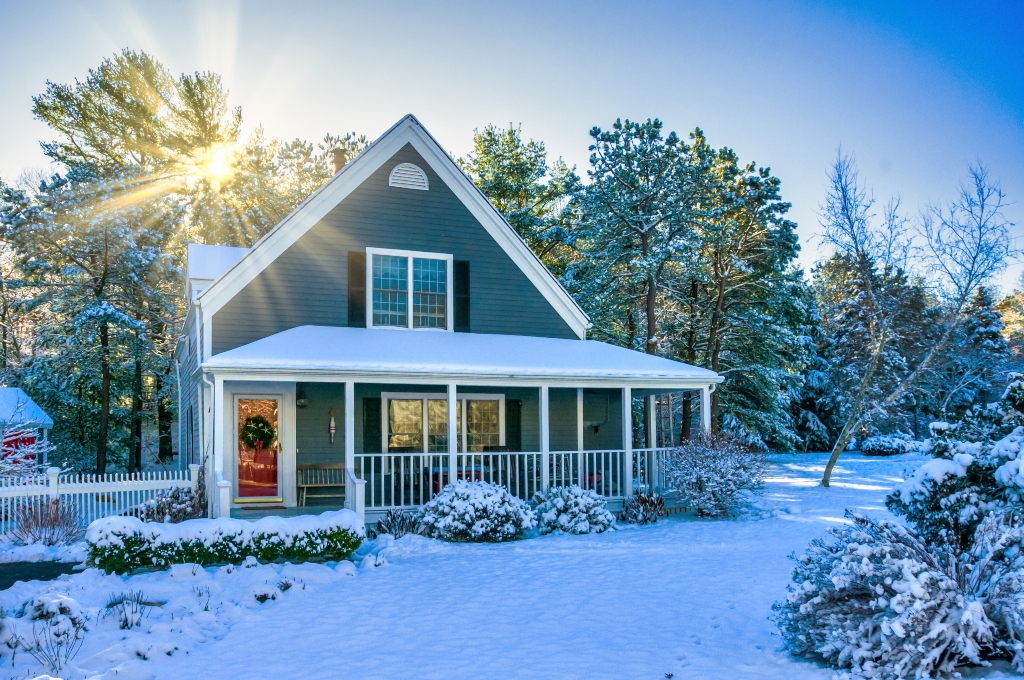
When winter hits in Minnesota, it’s easy to understand why some of us want a temporary escape to somewhere warm. Others might head up north for long ice fishing trips or to enjoy the winter wonderland. Whatever the reason to leave the house empty, you want to make sure it’s prepared for the weather. If you’re planning an extended vacation this season, follow this HVAC checklist for winter trips to help keep your home safe while you’re away.
- Turn the thermostat down but not off. There’s no need to keep an empty home comfortably warm, but you want to help protect against frozen pipes. It’s recommended to set the thermostat no lower than 55 degrees (closer to 60 during severe cold) and to open closet and cabinet doors so the warm air can reach the plumbing. For extended trips away from home, shut off the main water valve, drain remaining water by opening faucets, and leave them open until you return.
- Change or clean the air filter. Ensure your system has a fresh filter to prevent efficiency and performance issues while you’re away. And remember to change (or clean if reusable) your air filter monthly!
- Seal the home to trap the heat in and the cold out. The lower thermostat setting makes sealing warm air inside the home even more important. Check around windows, doors, and exterior walls and fix any potential leaks with caulk. And before you leave, lock all windows and doors to ensure a tight seal.
- Clean the home (especially dusting). Sealing the home naturally decreases ventilation. Clean the house to reduce the presence of dust and other airborne pollutants that impact indoor air quality, using extra care while vacuuming carpets and dusting hard surfaces.
- Clear/clean the area around the furnace/HVAC unit. Generally, there should be at least 3 feet of distance around your furnace or indoor air handling unit. Move any potential obstructions and clean the area, and ensure flammable items are kept far away from the unit.
- Ensure vents are clean and clear of obstructions. Similarly, make sure that the vents that feed the warm air to your home are dusted, cleaned, and free of obstructions – a closed or blocked vent will alter the system’s even distribution of air and decrease efficiency.
- Check your smoke and carbon monoxide (CO) detectors. Make sure they are clean and working properly with fresh batteries, and remember they should be tested weekly and cleaned at least monthly. You should refer to the manufacturer’s manual regarding maintenance and replacement schedules, but CO detectors should typically be replaced every five years and smoke detectors every 10.
- Unplug unnecessary appliances for extra safety and savings. Large appliances like TVs and sound systems, as well as smaller ones like coffee pots and toasters, will draw some electricity even when not in use. Unplug any appliances that don’t need power while you’re away to help reduce your utility bill.
- Make plans for monitoring. Consult your local HVAC company about any remote monitoring options available for your system. Before you leave home, notify close friends, family, and neighbors who can keep an eye out for any issues that you’ll be away. If you feel comfortable enough, consider giving a spare key to someone you trust so they can check on your home and provide updates.
- Schedule a professional inspection/maintenance service. The best way to ensure optimal safety, performance, and efficiency of your system is to schedule a professional inspection and maintenance service with an HVAC technician. Call the pros at WestAIR!
If you’re planning a fun, relaxing adventure away from home, the last thing you want to return to is a broken furnace, frozen pipes, or any other disaster around the house. Follow this HVAC checklist for winter trips to keep your home protected.
For all your residential heating and cooling needs, trust the experience and expertise of the professionals at WestAIR. Contact us to learn more.
This entry was posted in Furnace,Tips,Winter and tagged Home Safety, HVAC tips, Maintenance, Winter
Subscribe to Our Blog
With RSS feeds, you don't have to visit our site everyday to keep up to date. Simply subscribe to our blog via RSS or Email and our posts will come to you!
Search Blog Posts
Categories
Archives
- April 2024 (1)
- February 2024 (1)
- January 2024 (1)
- February 2023 (1)
- January 2023 (1)
- December 2022 (1)
- November 2022 (1)
- October 2022 (1)
- September 2022 (1)
- August 2022 (1)
- July 2022 (1)
- June 2022 (1)
- May 2022 (1)
- April 2022 (1)
- March 2022 (1)
- February 2022 (2)
- December 2021 (1)
- November 2021 (1)
- October 2021 (1)
- September 2021 (1)
- August 2021 (1)
- July 2021 (1)
- June 2021 (1)
- May 2021 (1)
- April 2021 (1)
- March 2021 (2)
- January 2021 (1)
- December 2020 (1)
- November 2020 (1)
- October 2020 (1)
- September 2020 (1)
- August 2020 (1)
- July 2020 (1)
- June 2020 (1)
- May 2020 (1)
- April 2020 (1)
- March 2020 (1)
- February 2020 (2)
- November 2019 (1)
- August 2019 (2)
- June 2019 (1)
- May 2019 (1)
- April 2019 (1)
- March 2019 (1)
- February 2019 (1)
- January 2019 (1)
- December 2018 (1)
- November 2018 (1)
- October 2018 (1)
- September 2018 (1)
- August 2018 (2)
- July 2018 (1)
- May 2018 (1)
- April 2018 (1)
- March 2018 (1)
- February 2018 (1)
- January 2018 (1)
- December 2017 (3)
- November 2017 (2)
- October 2017 (2)
- September 2017 (2)
- August 2017 (1)
- July 2017 (2)
- June 2017 (3)
- May 2017 (2)
- January 2017 (4)
- November 2016 (1)
- September 2016 (3)
- July 2016 (2)
- June 2016 (2)
- May 2016 (4)
- April 2016 (1)
- March 2016 (2)
- February 2016 (2)
- January 2016 (1)
- August 2015 (1)
- July 2015 (1)
- June 2015 (3)
- May 2015 (1)
- July 2014 (2)
- June 2014 (1)
- April 2014 (1)
- March 2014 (1)
- February 2014 (2)
- October 2013 (1)
- May 2013 (1)
- March 2013 (1)
- February 2013 (1)
- August 2012 (1)
- July 2012 (2)
- June 2012 (2)
- May 2012 (2)
- March 2012 (1)
- February 2012 (1)
- December 2011 (1)
- November 2011 (1)
- October 2011 (1)
- September 2011 (1)
- August 2011 (1)
- June 2011 (1)
- May 2011 (1)
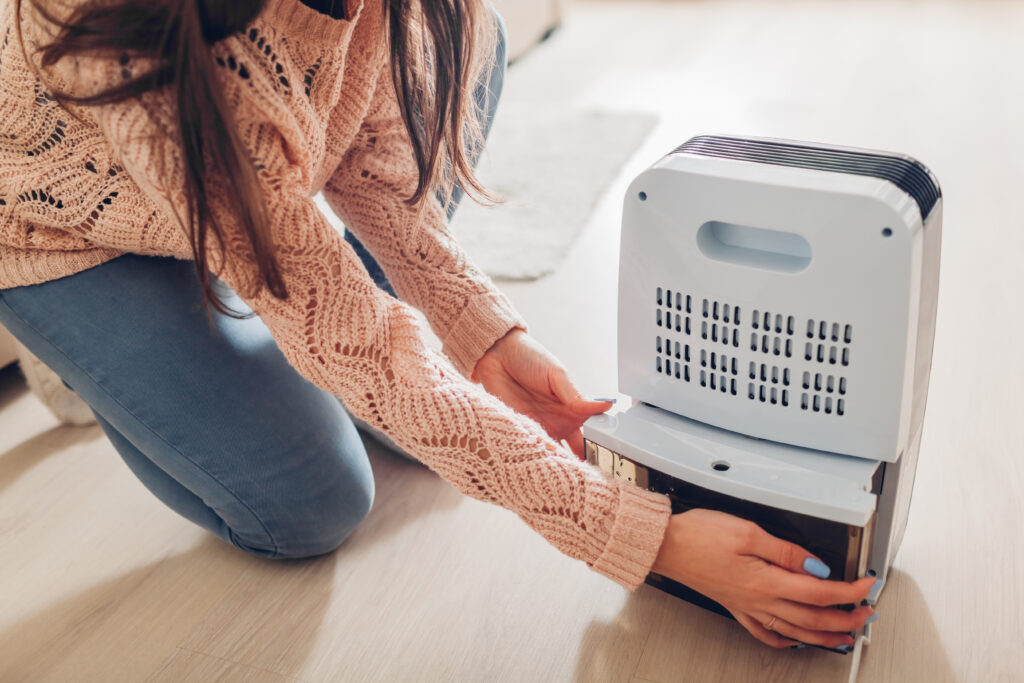
 Subscribe
Subscribe Subscribe
Subscribe